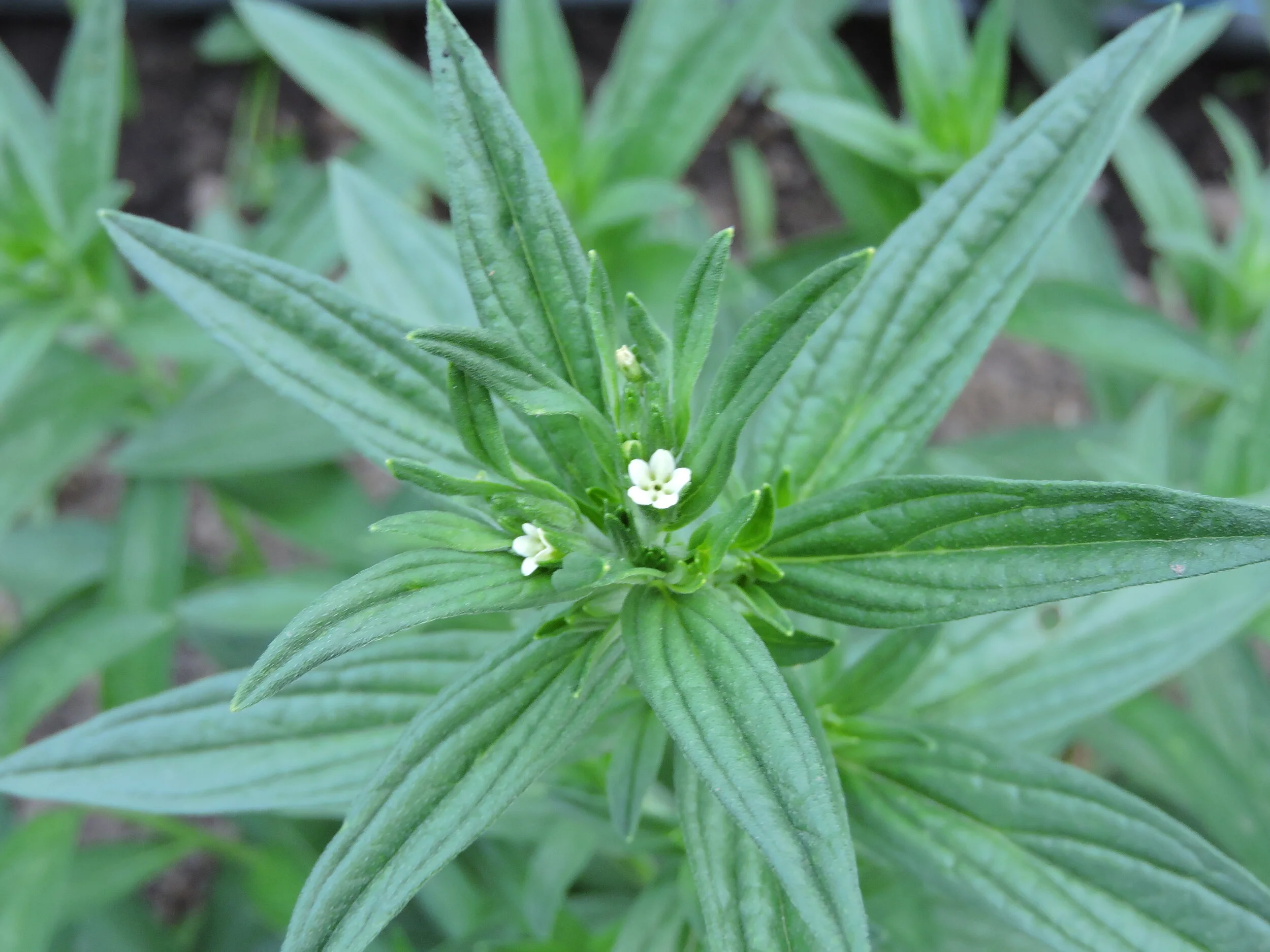Murasaki





Murasaki
(Lithospermum erythrorhizon)
Murasaki (also known as purple gromwell, redroot gromwell, and zi cao), contains the dye compound shikonin, which is the enantiomer (chemical mirror image) of the more widely used dye compound alkannin that is found in dyer’s alkanet. Beyond being a powerful dye, shikonin has a long history of use in traditional Chinese medicine, and is currently being studied for its ability to enhance the efficacy of some cancer treatments, and for its antiviral attributes.
As with madder root, you should wait until the end of the second or third year to harvest your roots to maximize the amount of pigment you can extract. We wanted to get a sneak peak of Murasaki’s color, so we dug up a first year plant and dyed some cotton fabric mordanted with aluminum acetate (seen in the photo to the left). We love the color we received, and are excited to see how much more pigment becomes available when we dig up more next year!
To dye with Murasaki, you knead the fresh or dried roots in water for an extended amount of time (we did 30 minutes, but have heard of people doing it for hours), and then dip your mordanted natural fibers into the room temperature dye bath until you achieve your desired color, or have exhausted the dye bath. We’ve heard there are quicker ways to extract dye that involve soaking the roots in alcohol, but we’ve only managed to get murky brownish gray or tans when we’ve tried this method. We are excited to experiment with other methods as our plants age.
Seeds take 3-4 weeks to germinate. We start ours indoors and just slightly cover the seeds with soil. Keep flats evenly moist until germination occurs, and plant outdoors after danger of frost. You can also direct sow the seeds in mid-spring, but we recommend transplanting murasaki.
It’s been difficult to find detailed dye instructions for this plant, please let us know if you have any tips!
Packet: 50 seeds
